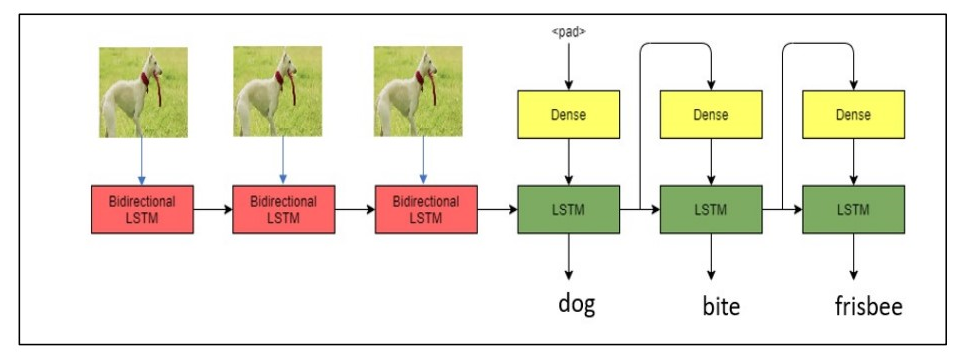Video-Captioning
A machine Learning project to generate captions for video frames indicating the relationship between the objects in the video.
Approach
In our framework we use a sequence-to-sequence model to perform video visual relationship predictions where the input is a sequence of video frames and the output is a relation triplet < object1 − relationship − object2 > representing the videos. We extend the sequence-to-sequence modelling approach to an input of sequence of video frames.
Figure: Bidirectional LSTM layer (coloured red) encodes visual feature inputs, and the LSTM layer (coloured green) decodes the features into a sequence of words.
Results
Python Dependencies
- Pandas
- Keras
- Tensorflow
- Numpy
- albumenations
- Pillow
Procedure
Training
For training the model, run the script train.py.
python train.py
For training on your own dataset:
Save your data in a directory (for the format check the data folder).
Update the json files.
-
object1_object2.json:
It contains a dictionary for each object, with object labels as keys and ids as values. -
relationship.json:
It contains a dictionary for each relationship, with relationship labels as keys and ids as values. -
training_annotations.json:
It contains a dictionary for each video in the training data, with video ids as keys and a list of <object1, relationship, object2> as values.
While running the script provide your directory path.
python eval.py --train_data <directory_path>
Testing
For testing the model or making predictions on your own dataset, run the script eval.py.
python eval.py --test_data <directory_path>
Result will be saved to a csv file ‘test_data_predictions.csv’.








